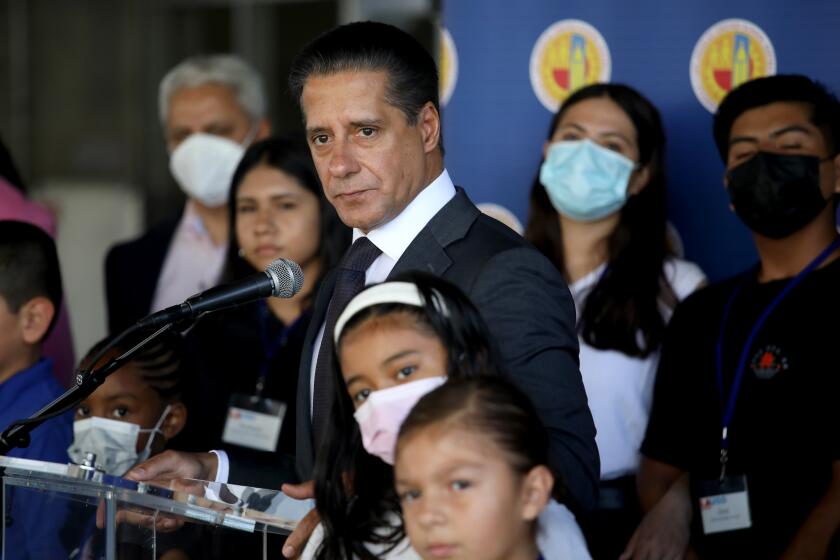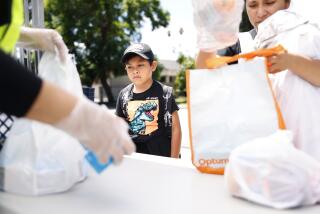L.A. Unified officials knock on doors, urging chronically absent students to return
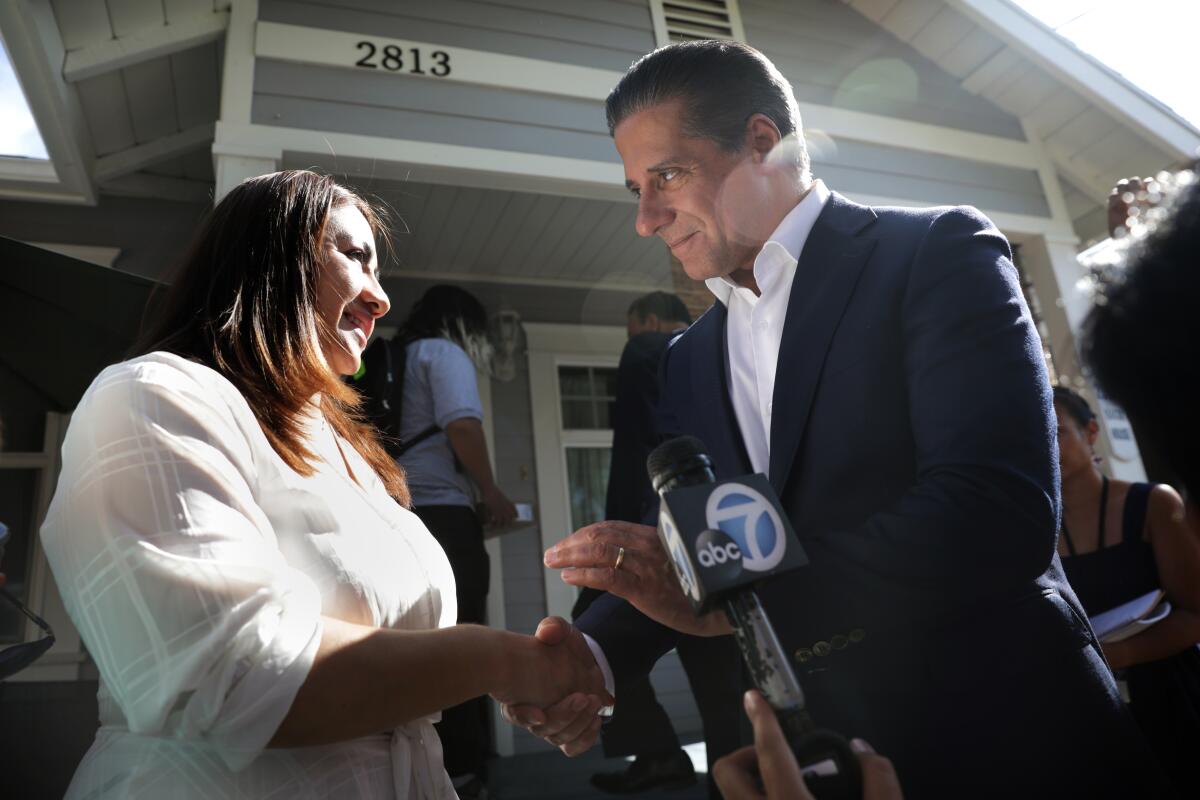
- Share via
Yordi Luna, 15 — who excels at math, likes science and loves playing football — missed about 40 to 50 days of classes during his first year of high school, mother Leydi Luna said.
“I knew he was missing, and I knew it was my responsibility to do something,” she said. But it wasn’t clear what.
As a single mother who had to drop her younger child at school before getting to work by 8 a.m., she often simply couldn’t get him to go as his motivation had slowly evaporated beginning in March 2020 when campuses closed.
Soon to be a sophomore at Garfield High, Yordi is among hundreds of thousands of L.A. Unified students who missed large parts of the school year last year. Nearly half of the district’s students were chronically absent, meaning they missed 10% or more of the school year. In pre-pandemic years, about 19% were chronically absent — a number that was already considered high.
As the district prepares to welcome students back from summer break on Monday, officials are under urgent pressure to get students attending regularly. On Friday counselors, staffers who volunteered to help and Supt. Alberto Carvalho knocked on doors of district families whose children had not been regularly showing up for school, urging them to return — while providing a glimpse of the sensitive pandemic difficulties still confronting students and parents.
Although many absences were related to COVID-19 quarantines, even when those are accounted for, the chronic absence rate was nearly 30%, Carvalho said Friday.
In another pandemic school year, parents hope their children progress in academics, mental health and development. Many remain concerned amid more relaxed COVID measures.
At the same time, students are struggling academically. When the state releases its standardized testing data from last year, the district will “see significant loss in terms of performance in reading and mathematics,” Carvalho said.
“That is, in part, because of the fact that our kids did not come to school,” he said. “That is just not acceptable. We’re not going to leave any one of these children. It is our moral cause. It is our professional responsibility.”
In Local District East, which includes schools in Southeast and East L.A., about 600 staffers were being deployed to visit homes and make phone calls with the expectation of reaching about 1,000 students who missed 14 or more days last year.
Carvalho, who was scheduled to visit five homes, invited reporters to join him.
The rise in chronic absence is just part of a problem Carvalho has taken to describing as the “lost children of Los Angeles.”
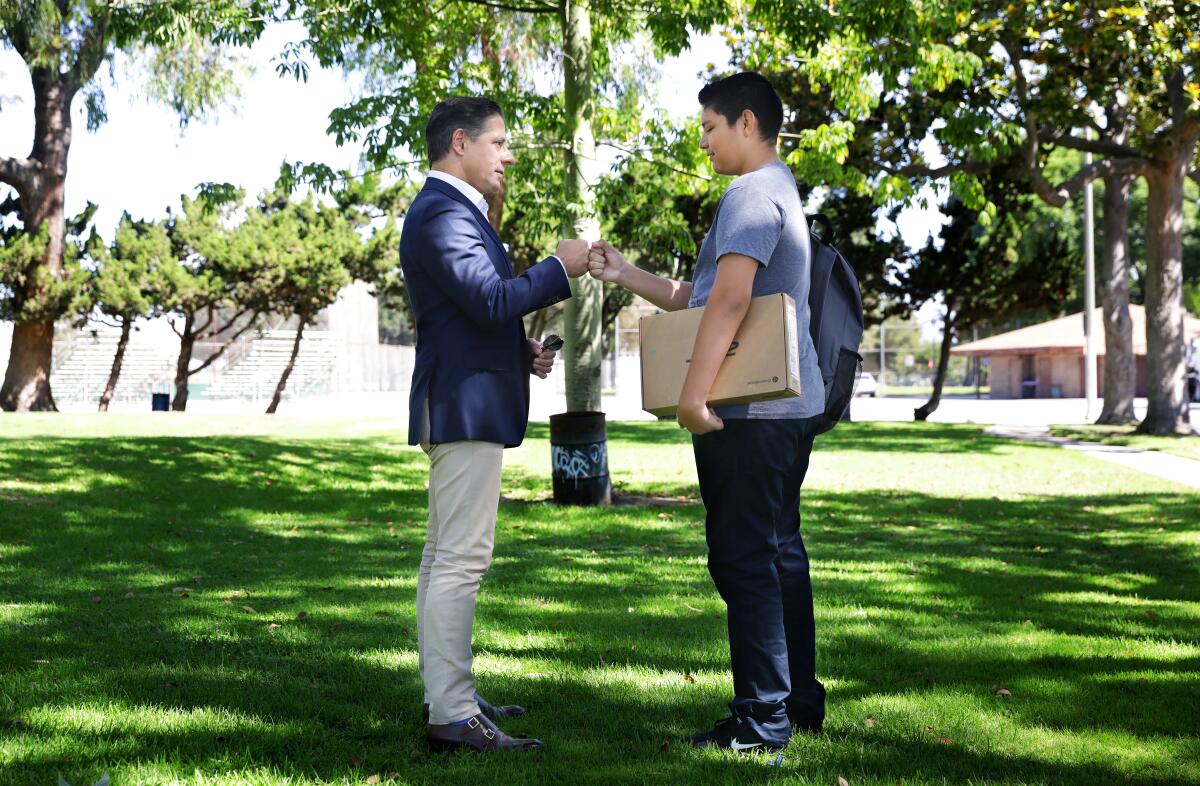
He has estimated that between 10,000 and 20,000 students — perhaps even more — are not enrolled in school or have simply stopped attending altogether.
Those children are harder to track. But district staff is also working to find them.
On Friday, almost every parent of a chronically absent student said COVID-19 quarantines kept their children home for prolonged periods. One mother said her car stopped working, so she struggled to take her small children to their different schools. A 17-year-old girl said she felt stressed and overwhelmed by the amount of work.
Yordi Luna said that when he was a seventh-grader, the year campuses closed, he liked being at school — especially seeing his friends every day.
During eighth grade, which was almost entirely virtual, he essentially stopped going.
“It was so easy to not go because it was just online,” he said. Instead, he would sleep or play video games.
When his freshman year came around and in-person learning fully resumed, he said, “I didn’t feel like it was so important to go to school.”
His attendance improved toward the end of the school year, when an attendance counselor took him under her wing, encouraging him while also tracking his daily whereabouts.
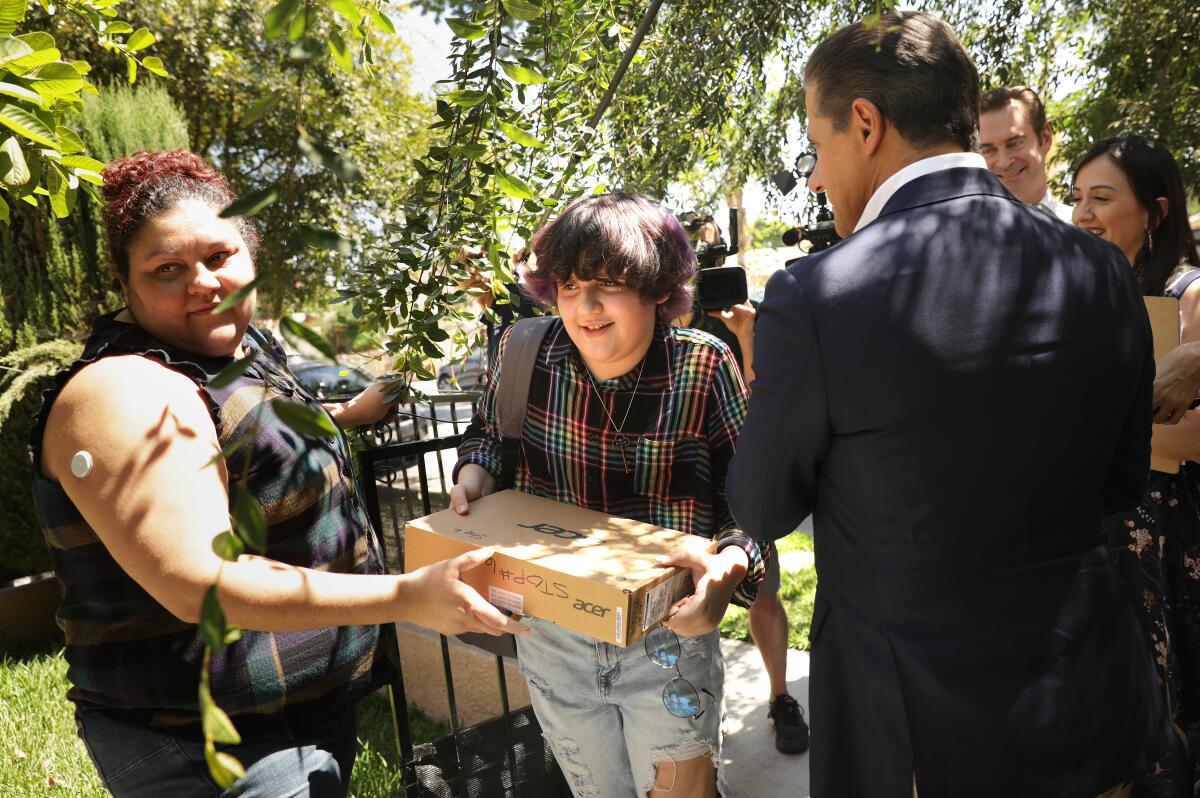
Aimee Mejia said her child Cloud, 13, missed so many days of school last year that it would be easier to count the number of days Cloud was present.
It isn’t that Cloud, who uses they/them pronouns, didn’t want to go to school. Often, they would tell Mejia to wake them up in the morning so they could go the next day. But then morning anxiety would hit.
At school, Cloud was bullied and had a hard time making friends.
“I wish that it would be more welcoming,” Cloud said.
When Carvalho showed up in front of her home, Mejia took the opportunity to press the superintendent on what he would do to make school more welcoming for her child.
She said she wanted the opportunity to be back as a volunteer on campus, which Cloud finds comforting. For much of last year, parents were kept from volunteering as part of the district’s COVID-19 safety precautions.
Carvalho assured her that she would be able to volunteer on campus now.
“Are you sure?” Mejia said. She had asked before and was rebuffed.
“What I say goes, right?” he said.
“That’s right, he’s the boss,” said Local District East Supt. José Huerta.
Mejia also asked why, if students were back to school, they had to spend so much class time on computers. Cloud chimed in to add that sometimes their classmates spent that time watching Netflix.
“I’ve seen that myself,” Carvalho said. “And that’s unacceptable.”
“We shifted to online learning, and now that we’re back in school we’re still doing online learning at school. That makes no sense,” he said. Although some digital learning is important, he said, face-to-face interactions are critical.
Officials are also scrambling to fill 800 teacher positions and hire 200 bus drivers, with school set to resume in two weeks.
That’s why, Carvalho said, he was visiting that day.
“Let him know what discourages you,” Mejia told Cloud.
The uniform, Cloud responded. Cloud’s clothes is how they express themselves, they said.
“No policy should keep any one student from going to school,” Carvalho said.
He told Cloud that he would like to visit them at school and follow them for a few periods. Over and over throughout the day, Carvalho repeated that the visits were not “a one and done.”
In-person visits will continue throughout the school year, he said.
Before he left, Carvalho promised Mejia personalized help for her child “to ensure that we are actually connecting with Cloud.... To ensure rapid acceleration. To ensure the best adaptation to school.”
“I understand,” Mejia said. She hoped, she added, that it would happen quickly.
More to Read
Sign up for Essential California
The most important California stories and recommendations in your inbox every morning.
You may occasionally receive promotional content from the Los Angeles Times.

